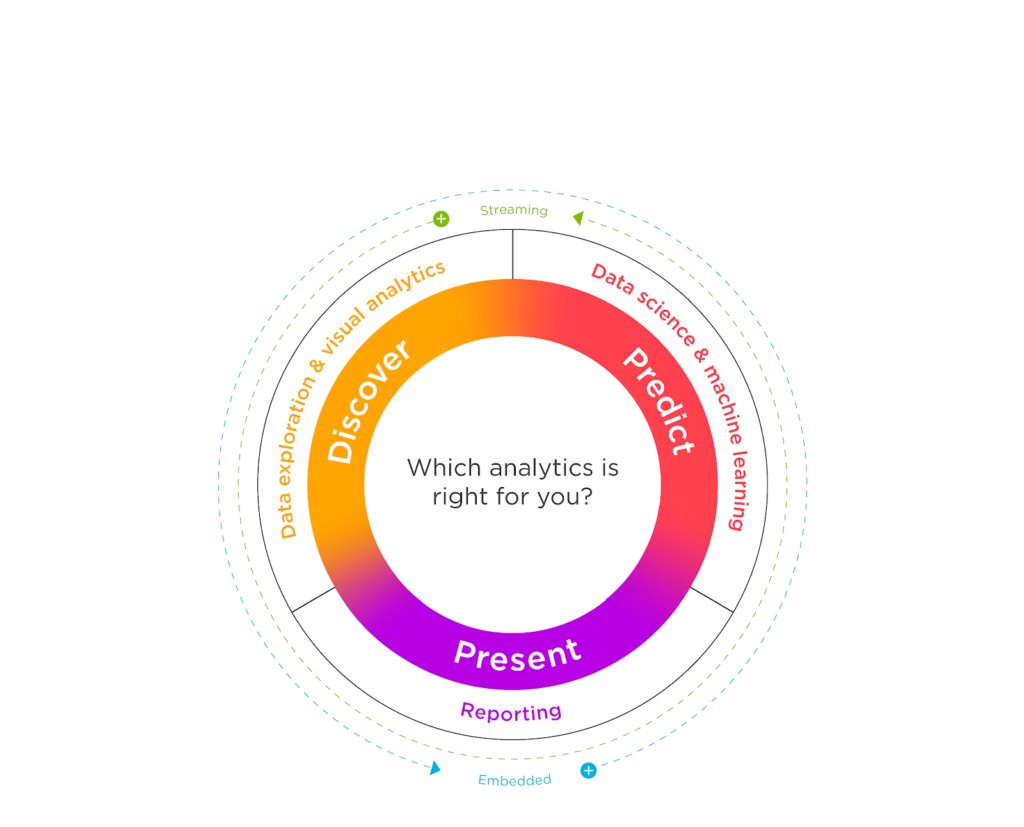Most organizations today are focused on becoming data driven and infusing data and analytics into their business processes. But many executives aren’t aware of the different types of analytics and their varied uses.
Breaking that down further, there are users who don’t know what they don’t know, clueless to the “unknown unknowns”, and then there are those who understand the challenges but don’t know where to start.
Similar to the concept of analysis paralysis, the inability to make a decision given too many choices, the latter group realizes that they have tons of data but needs help making sense of it.
Any organization considering investing in a data analytics initiative today has a lot of options. But we’ll focus on three we find especially powerful in opening the door for innovation: visual, predictive, and embedded analytics.
Both non-technical business professionals and even technical experts like data analysts or analytics leaders sometimes need help keeping up to date on analytic developments and guidance on what type of analytics option is right for their business goals.

Most organizations want to know the following before selecting their analytics route:
- Benefits and characteristics of different types of analytics
- Alignment with business needs and desired outcomes
- Key considerations, requirements, and capabilities
- Example business use cases
Why are these questions so critical to ask?
Data analytics can help your business gain a competitive advantage, make better decisions faster, and cut costs with more efficient operations. But only if you understand which type of analytics initiative best meets your biggest business challenges, and also allows for the most opportunities for growth.
Businesses compete on data. Whichever company can derive the most meaningful insights and turn those insights into actions that improve business wins. The insights you uncover are directly due to the type of analytics you practice. This is the decision that determines how you will make all other business decisions.
Despite the breadth of analytics options available today, we see three that are often explored by companies looking to innovate and extend the reach of their analytics:
Visual Analytics: Performing data exploration and identifying new insights and unseen problems and issues
Predictive Analytics: Using data science and machine learning models to predict potential outcomes from the business’s and the market’s actions
Embedded Analytics: Distributing information in reports and dashboards to help stakeholders so that optimal decisions can be made
But which component(s) of data analytics best suits your business? This ebook covers each analytics approach, outlining the key benefits and considerations for each, to help you decide.
Also, look out for the rest of this four-part blog series that will go into more detail about each analytics approach.
First published on TIBCO Blog





